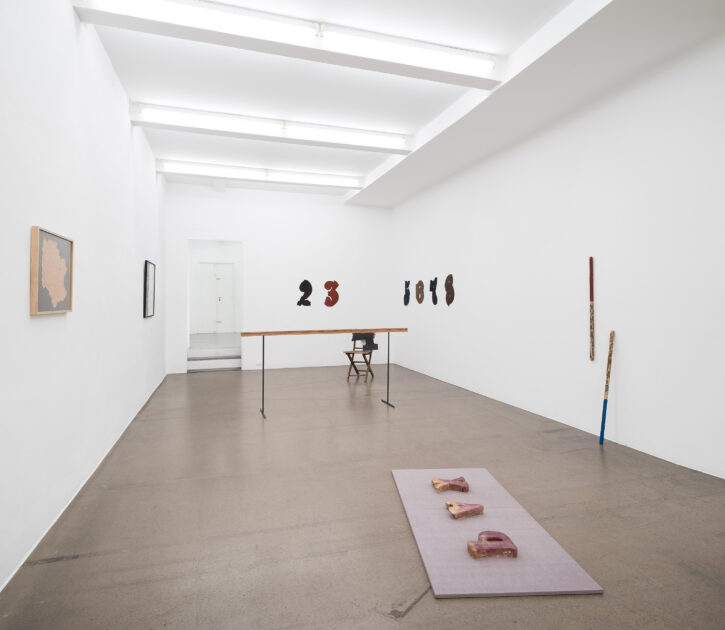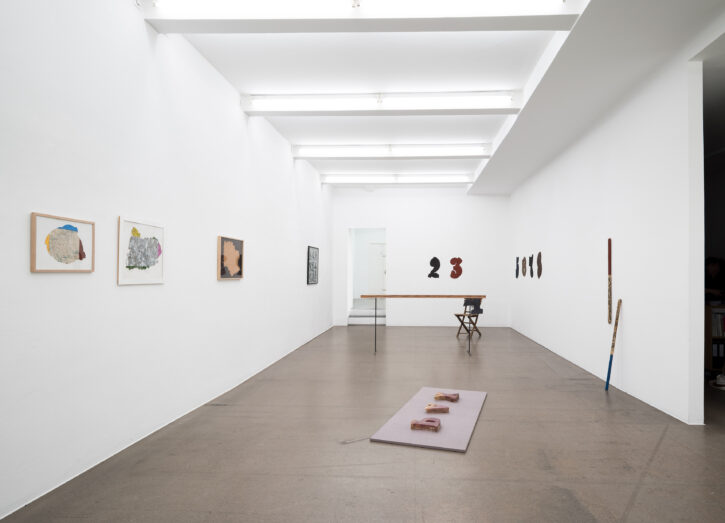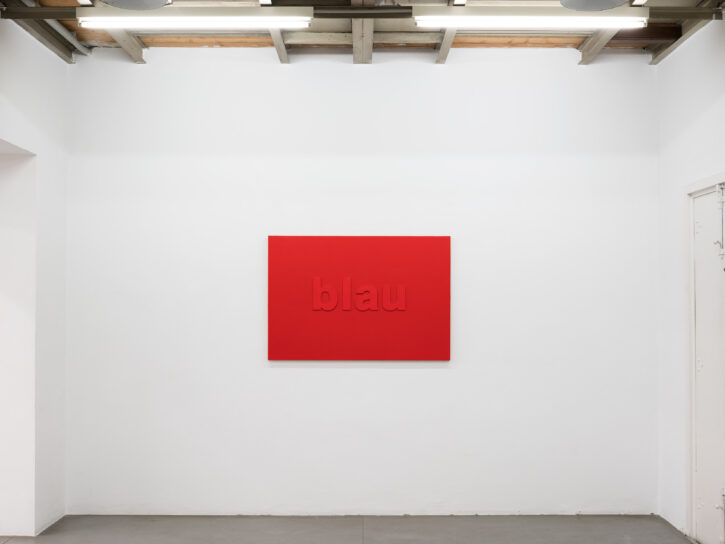Josef Bauer
About the exhibition
PAX stands for peace and also stands in as an auxiliary unit of measurement for a certain number of people, for example, the number of guests or visitors. The intention to artistically create connections among things, objects, letters, and meanings is essential to Josef Bauer’s entire body of work. The ambiguity of the concept PAX intrigues the artist. The student protests of 1968 and the peace movement that emerged from them played an important role for the artist as a young man. This is when he started to experiment with letters and with the various forms that the gesture of demonstrating and showing can take. He created photographic works of performative moments in his handling of letters, the so-called letter poles, as well as water pillows with floating letters, and the lesser-known object PAX.
The sociopolitical dimension in Bauer’s work has long been overlooked. Because of his close relationships with Heimrad Bäcker, Peter Kubelka and Gerhard Rühm, Bauer’s work was regarded as concrete-poetic sculpture and therefore perceived as more formalist than sociocritical. The wrinkle numbers work in a rather formal manner. The number 4 symbolizes the absence of humans (a PAX). Today we know that Bauer’s work has strong political connotations and that the protests of 1968, but also alter the fall of the Iron Curtain in 1989 and the first time the right-wing Freedom Party and the conservative People’s Party formed a coalition in Austria in 2000, are critical key moments in his work. While the floating letters highlight a playful exploration of language, the project Maikäfer flieg! (May Bug Fly!) with the doused war toy points to Christine Nöstlinger’s autobiographical novel about the war experiences of a young girl during the Nazi era. In the novel, the friendship between a girl and a soldier tells of humanity in times of cruel war, as if it were the model for the critical series of Nazi-sculptures with the so-called “available brush strokes.” In 2019 Bauer often talked about how he found these photographs at flea markets and wanted to “enhance [them] aesthetically.” The works date from the time shortly after the first right-wing conservative national government in Austria came into power in 2000. The imprint of a hand is still recognizable in Bauer’s plaster sculptures from the 1960s. Like the O with the plaster cast of a hand, they are evidence of human actions, invoke the artist as a present PAX, but open our eyes to the desire for reconciliation, towards an AND rather than an OR, towards a dissolution of all fronts, which Bauer experienced from an early age on and which he continually tried to dissolve.
Text: Harald Krejci
Translation: Angela Flury
Further informations:













